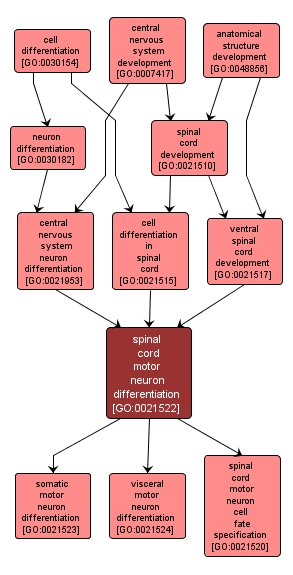| Desc: |
The process whereby neuroepithelial cells in the ventral neural tube acquire specialized structural and/or functional features of motor neurons. Motor neurons innervate an effector (muscle or glandular) tissue and are responsible for transmission of motor impulses from the brain to the periphery. Differentiation includes the processes involved in commitment of a cell to a specific fate. |














